#pseudotooth bird
Text

Branching out a bit more into the Cenozoic featuring Pelagornis, possibly the largest flying bird.
Always been a huge fan of it's unique beak.
#my art#paleoart#sciart#pelagornis#pelagornithidae#pseudotooth bird#cenozoic#bird#aves#extinct#seabird#nature
160 notes
·
View notes
Note
Which palaeontological data gap or debate would you most like resolving?
what the fuck are pelagornithids and where the heck do they go
63 notes
·
View notes
Text
Spectember 2023 #04: Some Aukward Birds
An anonymous submitter asked for a "penguin/auk-like relative of Pelagornis":

Odontopinguinus vomitus represents an unusal early branch of the pelagornithids that didn't take up long-distance soaring, instead specializing for a pursuit diving lifestyle convergently similar to that of the contemporaneous early penguins, and the later auks and plotopterids.
About 1.2m tall (~4'), it has a more slender spear-like beak than its relatives, with forward-pointing pseudotooth serrations. Like other pelagornithids these "teeth" are fairly fragile, so it feeds primarily on soft-bodied fish and squid, pursuing them underwater with wing-propelled underwater "flight".
Much like procellariiformes they're also rather stinky birds, producing musky preen oil and projectile vomiting foul-smelling stomach contents at threats and rivals.
———
And another anon wanted to see a "big flightless marine duck":
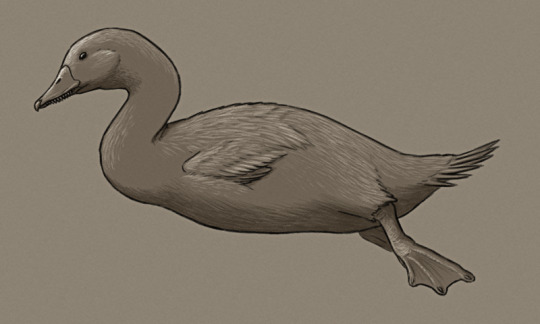
Thalassonetta anambulatus is descended from the already mostly-flightless steamer ducks. At around 2m long (6'6") it's massive for a waterfowl, with vestigial wings and large webbed feet used to propel itself while diving.
With its rather elongated and heavy body and loon-like leg configuration it's no longer able to walk on land – and it's actually almost fully aquatic, only awkwardly hauling out into isolated island beaches to molt and breed.
It feeds mainly on molluscs, crustaceans, and other marine invertebrates, using the large lamellae in its bill to strain them out of soft seafloor sediments.
#spectember#spectember 2023#speculative evolution#pelagornithid#duck#bird#dinosaur#art#science illustration
300 notes
·
View notes
Text
Fossil Novembirb: Day 16 - Among The Giants

During the Oligocene epoch, 33-23 million years ago, the landscape of Mongolia was as endlessly vast and wild as today. Forests were rare in this part of the world, instead there were shrublands, savannahs and deserts there. This landscape was the realm of giants, like the Paraceratherium of Walking With Beasts fame. Birds were also living in this land of giants, and some were already adapting to it.
Heterostrix: A small early owl, roughly the size of modern pygmy owls. But despite its small size, it was a capable predator of large insects, lizards and mammals, even birds as large as itself.
Agnopterus: One of the earliest known true flamingoes. Little is known of this bird, but it likely fed on tiny crustaceans filtered from the water, as do modern flamingoes.
Sonogrus: One of the flightless paleognath birds that was closely related to ostriches. This fleet footed herbivore belonged to the group known as paragruids.
Ergilornis: Another stem-ostrich in the group known as ergilornithids. The inner toe of these birds was reduced in size to allow for more efficient running.
Caspiodontornis: One of the few pelagornithids known from Asia, this pseudotoothed giant flew above the remnants of the ancient Tethys Sea.
#Fossil Novembirb#Novembirb#Dinovember#birblr#palaeoblr#Birds#Dinosaurs#Cenozoic Birds#Heterostrix#Agnopterus#Sonogrus#Ergilornis#Caspiodontornis
59 notes
·
View notes
Text
Palorchestes, a cenozoic weird-faced marsupial
Pelagornis, a cenozoic pseudotoothed birds
Phascolonus, a cenozoic giant wombat
Phoeniconotius, a cenozoic buff flamingo
Platypterygius, a cretaceous icthyosaur
Procoptodon, a cenozoic short-faced kangaroo
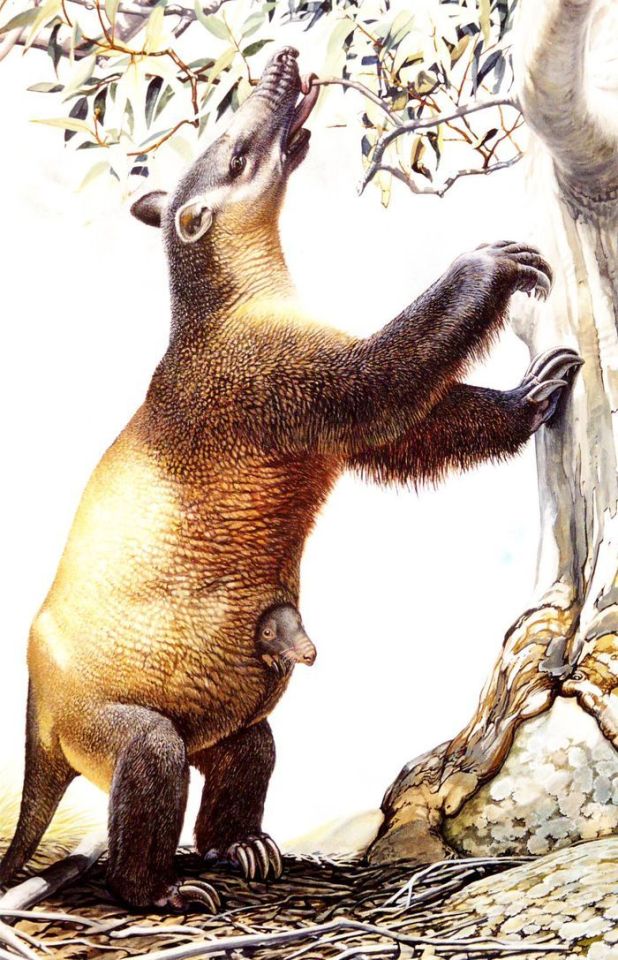

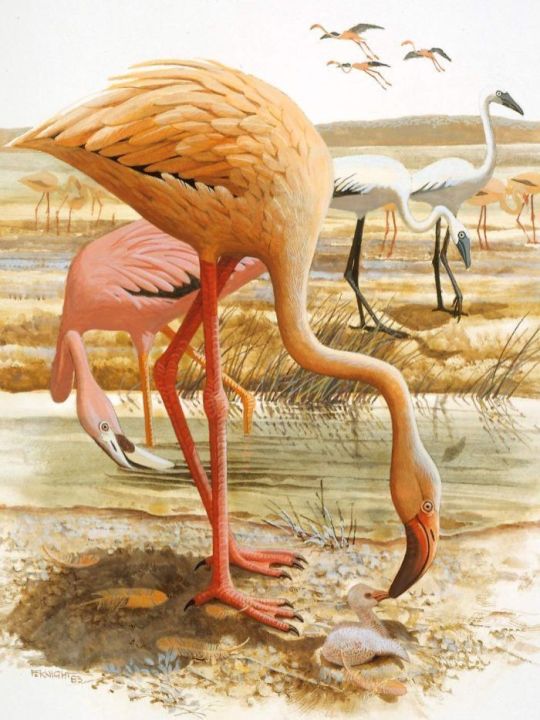



#palaeoblr#australian fossil alphabet thing#megafauna#Palorchestes#Pelagornis#Phascolonus#Phoeniconotius#Platypterygius#Procoptodon
22 notes
·
View notes
Text

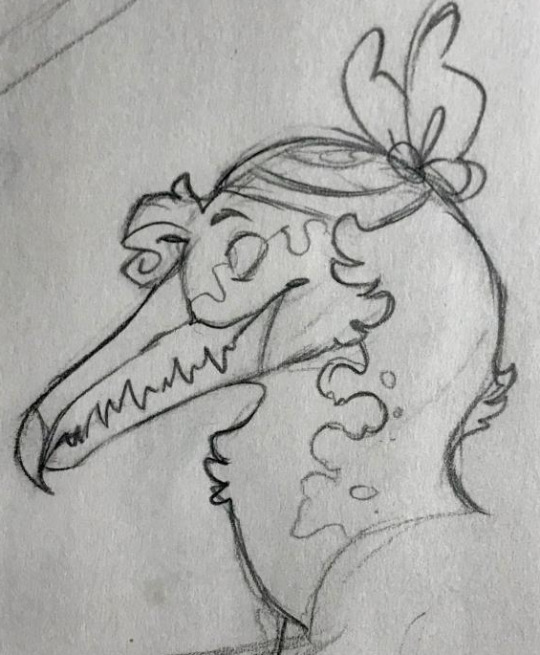
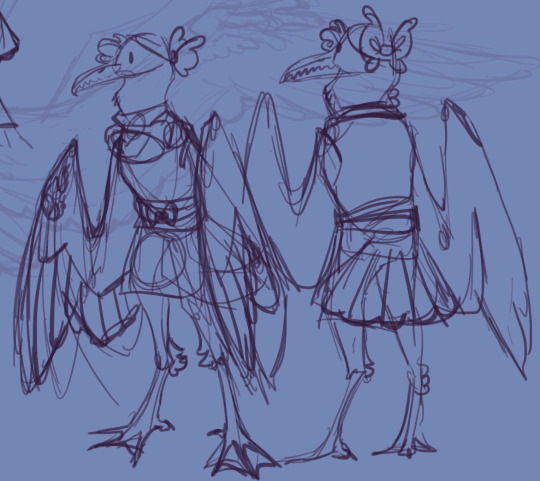
pelagornis palina!!! this one was SO much fun to do, especially with her absolutely wack proportions.
pelagornis, an extinct seabird that holds the record for the largest wingspan of any bird ever known, at 20-24 ft! that's about twice that of the largest extant bird's wingspan, the ~11ft wandering albatross. pelagornis is one of the pseudotooth birds- those serrations on the beak aren't actual teeth, but projections of the beak itself, used to snatch fish effectively.
for palina, i wanted to do something aquatic or relating to the water, certainly, and i thought the graceful vibes of an awesome seabird fit her well. pelagornis, as far as i know, is also thought to have frequented cliffsides for easier takeoffs, which meshes well with the cliff-filled terrain of the coastlands and her ward's volcanic home!
those wings took me so long. they're heavily referenced from the wings of albatrosses, since they have a very similar extremely long and thin shape, good for soaring over the ocean for extended periods of time. same goes for her little tail!
226 notes
·
View notes
Text
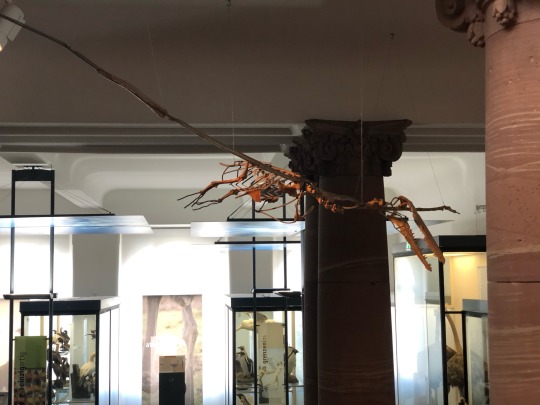
Pelagornis, a pseudotooth bird from the Miocene.
6 notes
·
View notes
Text
The Terror Bird Monstar appears, Pelagalein!

Description:
"An extremely dangerous Monstar that dominates the coastal isles it lives on. Should the crew of a ship see a Pelagalein, they will turn around to avoid the hulls being torn apart by their hardened beaks. A Pelagalein's bite force is strong enough to shred iron and steel."
Pelagalein's name is made of three parts: PELAGORNIS, GALE, and KERATIN. The 'gale' part is in reference to the large, monstrous wings of the Monstar, while both other parts reference the inspiration for the Monstar itself, the pelagornis.

The pelagornis is both a member of and the name for a genus of prehistoric birds that used to occupy many areas of the prehistoric world. Pelagornis is thought to be the ancestral relatives of aquatic birds such as pelicans, storks, and other waterfowl such as ducks and geese. They are known as pseudotooth birds for the keratinous growths that line their beaks, resembling teeth, allowing them to better grip the slippery fish and aquatic life they preyed upon. They also had wingspans close to 20 feet long! Despite the large amount of members in the family, very little complete fossil records have been found due to their lightweight bones being crushed over time and improperly fossilized.
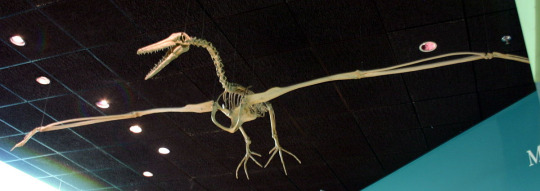
3 notes
·
View notes
Text
Küsschen für dich!
Taking care of him and grows a bit too long can be a mature hen’s egg, and chicks can be a Pelagornithid - pseudotoothed bird - instead . Sources: https://en.wikipedia.org/wiki/Juncitarsus Mayr, G. Surrounded.
2 notes
·
View notes
Text
A Look At Stuff You Probably Never Heard Of: Ancestors: The Humankind Odyssey
I was actually going to take a look at a different game today, but at the last second, I decided to take a look at this fairly recent game. So today, we’ll be taking a look at... Ancestors: The Humankind Odyssey!

Ancestors: The Humankind Odyssey, or simply just Ancestors, is a T-rated open world survival game developed by Panache Digital Games, a new game studio founded by Patrice Désilets, who left Ubisoft after Assassin’s Creed Brotherhood. It was also published by Private Division. This game was initially released on PC via the Epic Games Store on August 27th, 2019 due to an exclusivity deal that would last a year. It later saw a release on PlayStation 4 and XBox One later that year on December 4th.
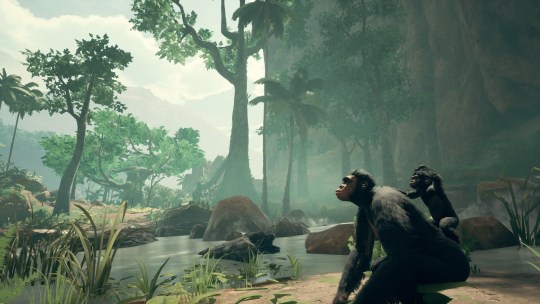
The game doesn’t have a story in the typical sense, but it takes place about 10 million years ago prior to current time in prehistoric Africa. The objective is to survive, learn, adapt, explore, and evolve from an ancient hominid known only as “The Missing Links”, evolving up to 2 million years prior to current time.
The game itself opens with a fish being caught by a pelagornis (an ancient pseudotooth bird), but drops it into the water, where it gets caught by a grey-crowned crane, but drops the now-dead fish when it gets attacked and eaten by a Thorbjarnarson's Crocodile. The fish is then picked up by an elderly male hominid with an infant on his back. Upon taking the fish to a high point to eat it, the hominid is taken away by a Bateleur Eagle to its nest, where it is killed and eaten as the infant falls to the ground below. Upon finding a hiding spot, perseptive switches to an adult, trying to find the lost infant. After that, the game opens up.

As stated before, this is a survival game with a wide open area to explore. The biggest thing about this game is that there are no maps, meaning the player must rely on recognizable locations to navigate. Though this isn’t entirely up to the player to remember, as the hominid can “remember” specific locations (only one at a time until later). The game encourages exploration and there are many ways to get around, most notable by swinging from branches to branches and climbing up cliffs and tree trunks. This is the best way to avoid many predators and enemies that can often be found on the ground floor.
There are many animals that can and will attack any and all available hominids. From predators such as the Machairodus (early Sabertooth Tigers), Crocodiles, Black-backed Jackals, and even Hyenas. Crawling Threats include Megarian Banded Centipede, African Rock Pythons, and Black and Green Mambas. While Irascible Threats (creatures that are typically passive, but can and will attack if the player gets too close) such as Giant Warthogs, African Buffalos, Hippos, Miocene Elephants (easily the strongest and most difficult animal), and even Miocene African Otters (which are far more aggressive and bigger than current otters).
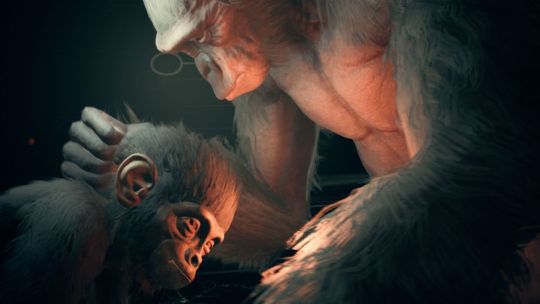
With a Clan, the player can control a single hominid and by bonding with another adult hominid of the opposite gender, a bond can be formed, making the two a couple, thus leading to procreation. Once a child is born, Neuronal Energy can be gained by performing certain actions and this Energy is used to Evolve the present Hominid. But if that Hominid dies, all Neurons (upgrades) are lost unless they had a child and said Neurons become permanently locked upon changing a generation.
And now, the time has finally come for my Final Recommendation:
Never Let Go Of It||Get It||Hold Onto It||Try It||Consider It||Stay Away From It
I won’t lie, this game isn’t for everyone. It can feel really slow at times and though this is a game that doesn’t hold your hand, it’s also the kind of game that tosses you into the deep-end of the pool while being tied to a 40-pound weight and expecting you to swim.before you drown. While you are told how to play the game and the general controls, they expect you to instantly remember everything. But at the same time, it can feel satisfying when things finally click and you can do things without really thinking about it. There are (in-game) days where you can do a lot of things and make tons of progress, while there are other days where things run slowly with little to no progress being made. I myself, despite enjoying the game, couldn’t play it two days in a row, as my interest wasn’t great enough to do so. I would take a break from the game for days or even weeks before picking it up again.
The A (XBox)/X (PS4) is used for almost everything. Picking up items, running, jumping, eating, sleeping, swinging, and dodging/attacking. The X (XBox)/Square (PS4) is used for hearing. B (XBox)/Circle (PS4) is used for smell. And Y (XBox)/Triangle) are used for “Intelligence”, which is what allows you to remember specific things, such as notable locations, animals, food, and items.
I couldn’t figure out where else to put this, but you’re given these side quests to do. They aren’t important in any way, but are there to encourage exploration and help you become more familiar with the idea. Pretty much all of them are about discovering a specific location. On to of encouraging exploration, the game also encourages experimentation and traveling outside your comfort zone. When you start the game, your clan’s territory is very small, but it doesn’t take long before you have to explore and enter unknown locations. When entering a new location, the hominid will become scared and you’re required to gain dopamine by identifying things nearby, such as fruit, items, and even other animals before finally conquering your fears.
And at various points in the game, you’ll be required (but not explicitly forced) to take your clan and move to another location. This, of course, can make your an easy target for enemies. But they can be scared away by using Intimidate, with your group scaring them away. Intimidate hardly ever works while on your own with only a few exceptions. You also have to be careful, as while many injuries won’t outright kill you, that can hamper your movements, making it harder to get away from enemies. Bleeding is especially dangerous, as it can slowly cause your primate to bleed to death unless treated. Not to mention falling from too great a height can cause you to get a broken leg, which can either heal naturally (after a considerable amount of time), or using certain food. But even greater will outright kill your hominid. And not just falling onto the ground, but even onto a tree branch you planned on swinging from will impale your hominid.
When at least one child is born, you can change the generation, causing time to leap forward a few years, causing infants to grow into adults, adults into elderly, and the elderly die. And any female adults become infertile upon becoming elders. This can only be done at your Clan Settlement, while accessing the Evolution Menu (which is also used to gain Neuron). You can do this to Lock in a Neuron, thereby making it permanent for all hominids from that point forward But you only get a certain number of locks relative to the amount of children born in that generation. So if there are any that aren’t locked, they must be regained again.
After passing a Generation, you can perform an Evolution Leap, allowing you to jump ahead several thousand years, gaining more with each Feat you perform, marked by a checklist based on what you’ve seen or done. The more you do, the more you jump ahead. And if you do or discover certain things before what science dictates (like standing upright before 4 million years ago), you get an “Ahead of Science” bonus, jumping ahead even more years. Births also count to how many years are added while deaths (not counting natural deaths) take away from it.
I also want to mention that when you finally reach 2 million years ago, you get a final cutscene and the game just ends right there. I won’t lie, it’s rather underwhelming. But apparently, this is only the first part in a trilogy.
So with that said, I’ll see you guys next month, where I take a look at a game that it impossible to buy now and you can’t play it unless you already owned it or use an emulator. And no, I’m not talking about PT.
9 notes
·
View notes
Note
according to the Battle of the Birds purple rift storybook, the Conductor does in fact have eyes. (I also imagine he's a small yellow pseudotoothed bird. Pseudotoothed birds were extant until about two million years ago. ) "trivia: the conductor does in fact have eyes" this game is so weird i love it
Of course he has eyes, you just can’t see them. With them being so covered up though he should have trouble seeing but clearly doesn’t. xD (Also, just checked, even in the storybook, his actual eyes aren’t visible, just the star cartoon effect on them.)
I was thinking his species might come from velociraptors; they had feathers and the mouth shape is pretty close. I’m not 100% sure about that headcanon though, in fics, I might just never mention it and let it be a mystery because no one but the Conductor knows.
Really, though since the game never addresses it, any headcanon is perfectly applicable. Someone wants to see him as a weird owl, extinct bird, dinosaur or anything else, all perfectly fine interpretations. xD
6 notes
·
View notes
Text
Scientists discover one of world's oldest bird species at Waipara, New Zealand
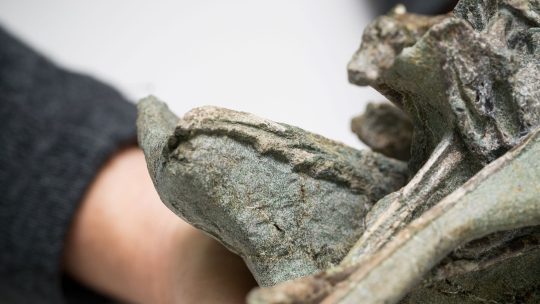
The ancestor of some of the largest flying birds ever has been found in Waipara, North Canterbury.
Bony-toothed birds (Pelagornithids), an ancient family of huge seafaring birds, were thought to have evolved in the Northern Hemisphere—but that theory has been upended by the discovery of the family's oldest, but smallest member in New Zealand.
At 62 million-years-old, the newly-discovered Protodontopteryx ruthae, is one of the oldest named bird species in the world. It lived in New Zealand soon after the dinosaurs died out.
While its descendants were some of the biggest flying birds ever, with wingspans of more than 5 meters, Protodontopteryx ruthae was only the size of an average gull. Like other members of its family, the seabird had bony, tooth-like projections on the edge of its beak.
The seabird fossil was identified by the same team that recently announced the discovery of a 1.6 meter-high giant penguin from the same site.
Amateur paleontologist Leigh Love found the partial Protodontopteryx skeleton last year at the Waipara Greensand fossil site. The bird was named Protodontopteryx ruthae after Love's wife Ruth. Love wanted to thank her for tolerating his decades-long passion for paleontology.
Fellow amateur Alan Mannering prepared the bones, and a team comprising Love, Mannering, Canterbury Museum Curators Dr. Paul Scofield and Dr. Vanesa De Pietri and Dr. Gerald Mayr of Senckenberg Research Institute and Natural History Museum in Frankfurt, Germany, described Protodontopteryx.
Dr. Scofield says the age of the fossilized bones suggests pelagornithids evolved in the Southern Hemisphere. "While this bird was relatively small, the impact of its discovery is hugely significant in our understanding of this family. Until we found this skeleton, all the really old pelagornithids had been found in the Northern Hemisphere, so everyone thought they'd evolved up there."
"New Zealand was a very different place when Protodontoperyx were in the skies. It had a tropical climate—the sea temperature was about 25 degrees so we had corals and giant turtles," he adds.
Dr. Mayr says the discovery of Protodontopteryx was "truly amazing and unexpected. Not only is the fossil one of the most complete specimens of a pseudotoothed bird, but it also shows a number of unexpected skeletal features that contribute to a better understanding of the evolution of these enigmatic birds."
Later pelagornithid species evolved to soar over oceans with some species measuring up to 6.4 meters across the wings.
Protodontopteryxs' skeleton suggests it was less suited for long-distance soaring than later pelagornithids and probably covered much shorter ranges. Its short, broad pseudoteeth were likely designed for catching fish. Later species had needle-like pseudoteeth which were likely used to catch soft-bodied prey like squid.
Dr. De Pietri says "because Protodontopteryx was less adapted to sustained soaring than other known pelagornithids, we can now say that pseudoteeth evolved before these birds became highly specialized gliders."
The last pelagornithid species died out around 2.5 million years ago, just before modern humans evolved.
The Waipara Greensand site where the Protodontopteryx skeleton was found has yielded several important scientific discoveries in recent years, including ancient penguins and the world's oldest tropicbird fossil.
Some of these discoveries, including the Protodontopteryx fossil, will be displayed in an exhibition about ancient New Zealand at the Museum later this year.
This research was funded by the Royal Society of New Zealand's Marsden Fund and is published today in the journal Papers in Palaeontology.
Provided by: Canterbury Museum
More information: Gerald Mayr et al. Oldest, Smallest And Phylogenetically Most Basal Pelagornithid, From The Early Paleocene Of New Zealand, Sheds Light On The Evolutionary History Of The Largest Flying Birds. Papers in Palaeontology (2019). DOI: 10.1002/spp2.1284
Image: 'Protodontopteryx' fossil showing the bony, tooth-like projections on the bird’s beak.
Credit: Canterbury Museum. Image Available CC BY NC and for News and Current Affairs Use
Read the full article
0 notes
Note
trick or treat :0
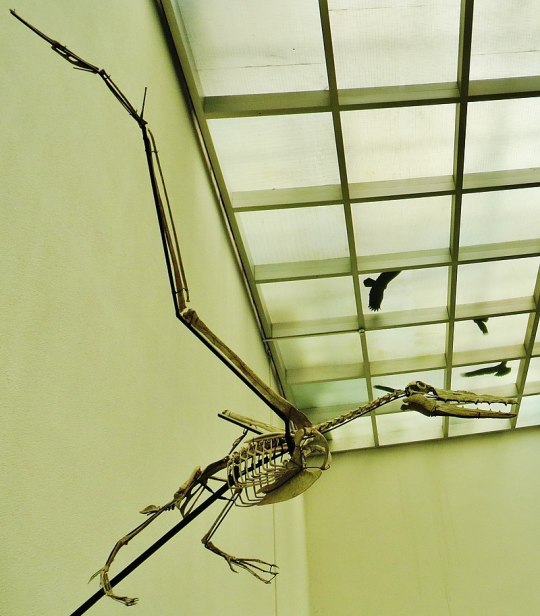
Dasornis!
21 notes
·
View notes
Photo

Weird Heads Month #29: Giant Saw-Toothed Birds
The pelagornithids, or "pseudotooth birds", were a group of large seabirds that were found around the world for almost the entire Cenozoic, existing for at least 60 million years and only going completely extinct just 2.5 million years ago.
Their evolutionary relationships are uncertain and in the past they've been considered as relatives of pelicaniformes, albatrosses and petrels, or storks, but more recently they've been proposed to have been closer related to ducks and geese instead.
Whatever they were, they were some of the largest birds to ever fly, and many of the "smaller" species still had wingspans comparable to the largest modern flying birds.
But their most notable feature was their beaks. Although at first glance they look like they were lined with pointy teeth, these structures were actually outgrowths of their jaw bones covered with keratinous beak tissue. While these bony spikes would have been useful for holding onto slippery aquatic animals like fish and squid, they were actually hollow and relatively fragile so pelagornithids must have mainly caught smaller prey that couldn't thrash around hard enough to break anything.
The serrations also only developed towards full maturity, and the "toothless" juveniles may have had a completely different ecology to adults.
Pelagornis chilensis here was one of the larger species of pelagornithid, with a wingspan of 5-6m (16'4"-19'8"), known from the western and northern coasts of South America during the late Miocene about 11-5 million years ago.
Like other pelagornithids it was highly adapted for albatross-like dynamic soaring, with long narrow wings that allowed it to travel huge distances while expending very little energy – but with its proportionally short legs it would have been clumsy on the ground and probably spent the vast majority of its life on the wing, only returning to land to breed.

———
Nix Illustration | Tumblr | Pillowfort | Twitter | Patreon
#weird heads 2020#science illustration#paleontology#paleoart#palaeoblr#pelagornis#pelagornithidae#pseudotooth bird#odontopterygiformes#galloanserae#bird#dinosaur#art#an odd duck#maybe#it's a lovely morning in the miocene and you are a horrible pelagornithid#deliberately visually emphasizing the duckishness because i haven't seen anyone actually do that with these guys
142 notes
·
View notes
Text
Fossil Novembirb: Day 7 - Ancient London Town
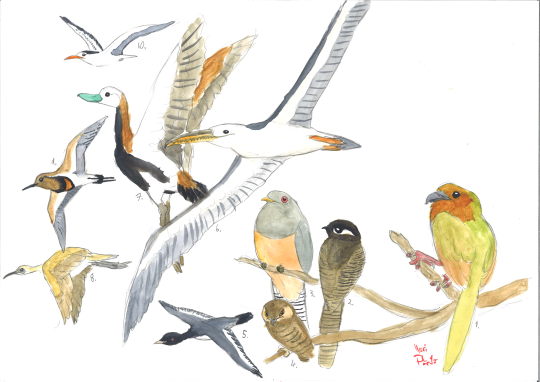
The 50 million year old fossil site of London Clay preserves impressive fossils of early Eocene birds. Back then, during the PETM, the city of London was near a tropical shoreline, and the land was covered with forests of tropical trees and palm groves. In this hot house world, birds were diversifying rapidly, and lots of strange forms lived in London Clay.
Pulchrapollia: This pretty bird belongs to a lineage related to parrots and had parrot-like feet, but was not a close relative of them. This bird had a corvid-like beak and was likely an omnivore, like jays today.
Archaeodromus: A relative of swifts, potoos and nightjars that hawked after insects, catching them in its huge mouth.
Eotrogon: An early relative of the modern trogons and quetzals. It dove after insects and fruit from its high perch.
Ypresiglaux: Among the earliest known owls, and also one of the smallest. Despite its small stature, it was a fearsome predator of insects and small vertebrates.
Nasidytes: The earliest known loon (or diver). Like its modern relatives, it was an aquatic predator of fish and invertebrates, diving beneath the surface to catch its prey.
Dasornis toliapica: A species of pelagornithid, which were large pseudotoothed soaring seabirds. This small species had a wingspan of "only" three metres.
Nettapterornis: A wading waterfowl related to modern ducks that used its long legs and flat bill to filter food from the water.
Lithornis vulturinus: An ancestral palaeognath that was perfectly capable of long distance flight. It had a flexible beak to help catch its prey.
Charadriisimilis: A small wader that was related to the same group as oystercatchers, sandpipers and plovers. It used its long legs and beak to catch small animals from the sediment.
Prophaethon: An early relative of modern tropicbirds. It could swim and fly well, and may have had a niche similar to modern gulls or terns.
#Fossil Novembirb#Novembirb#Dinovember#palaeoblr#birblr#Birds#Dinosaurs#Cenozoic Birds#Pulchrapollia#Archaeodromus#Eotrogon#Ypresiglaux#Nasidytes#Dasornis#Nettapterornis#Lithornis#Charadriisimilis#Prophaethon
46 notes
·
View notes
Photo
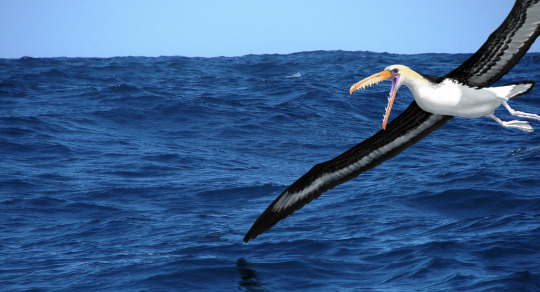
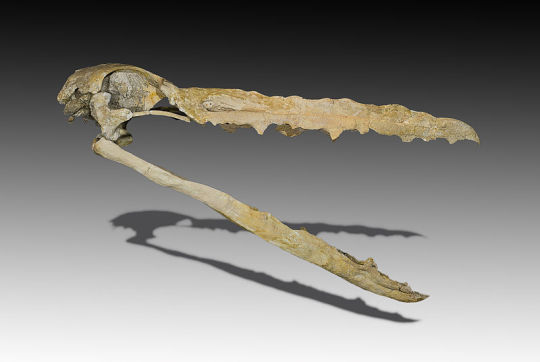
Genus: Pelagornis
...a genus of pseudotooth birds that lived from the Early Miocene to the Early Pleistocene. Members of Pelagornis were quite large with the biggest specimens boasting wingspans of 15-20 feet and weighing in at 50-75 pounds. True to their names pseudotooth birds like Pelagornis did not have true teeth, but sharp beak projections which likely aided them in catching large slippery fish. Pelagornis likely lived a similar lifestyle to extinct fish-eating pterosaurs as they probably roamed the seas catching fish and cephalopods mid-flight.
Phylogeny
Animalia-Chordata-Aves-Odontopterygiformes?-Pelagornithidae-Pelagornis
Images: Daniel Martinez Piña and Didier Descouens
#Pelagornis#Science#Pseudotooth bird#Odontopterygiformes#Moicene#Plesitocene#Pliocene#Birds#Aves#Extinct#Chordata#Pelagornithidae
370 notes
·
View notes